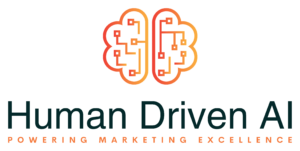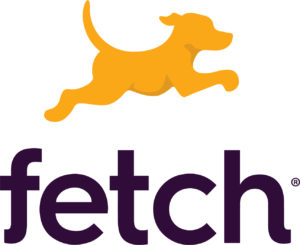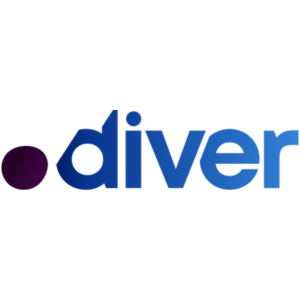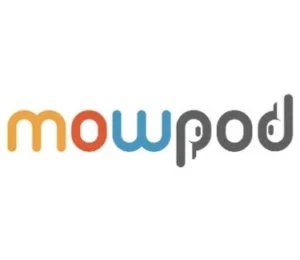Digital identity as the currency of the information age
Max Kirby
Publicis Sapient
- Part 1The transformation to customer-centric thinking
- Part 2 Digital identity as the currency of the information age
- Part 3The Future as it relates to customer data
Show Notes
Quotes
-
“So yesterday we talked about how companies are starting to be able to collect data from their customers across their entire lifecycle by moving all of their platforms into a single source in the cloud whether through Amazon, Google, or Microsoft. Everything from your marketing activities to customer database, your customer service. You can really get a picture across your entire customer lifecycle and that creates a lot of marketing signals for marketers.” -Ben “To some extent, digital identity never stopped being the most valuable form of data. If you would say that data is the new oil, like so many do, customer data, digital identity, data about us as people is the light sweet crude. It’s the most valuable, ready to be used data and it really built the large platform that has become the economic drivers of our economy at this point.” -Max“I actually have done the math on this, if you were to take out the mouth we haven’t grown in something like 12 years organically as an economy. The tech has just been leading the cyclical and secular growth cycles in a way that hasn’t been seen before.” -Max“That’s why everyone says we’re in the Fourth Industrial Revolution, but the driver of the 4IR is, has been, and I think will continue to be data about people, organized against those people as individuals which are what digital identity is.” -Max“Let’s say we are at a restaurant and I’m your waiter, Ben. So I ask you, ‘do you have any dietary preferences or allergies at the table tonight?’ Now, my question for you is not what would your answer be but instead, ‘would you answer that question?’ So, yes you would and the reason is you expect to eat something and it’s probably a goodidea to give the waiter the information he needs to make sure you don’t die from an allergy.” -Max“This is why answering questions to businesses at the simplest level is not a bad thing. The problem comes when those answers are shared with people who you never met. This creepiness factor, in the way that I understand it at least, is the distance between the relevance of the information that you’re asking for and the value that I expect to receive.” -Max “There’s also a question of cataloging. Sure, the waiter can ask me about my allergies but the assumption there is, it is a one-to-one conversation. That it is not being cataloged and put into a national registry of dietary allergies.” -Ben “To me, the question is not, ‘are you willing to give the information?’ It is to whom the information being given. Like how broadly is this going to be shared sothat’s where the real value is.” -Ben “We’re releasing a study tomorrow and we partnered with IpsosGlobal Market Research company. We pulled 5,000 people in different markets around the globe. We did Germany, Australia, France, the UK, and then North America -Canada and the US. We were asking them what they were comfortable sharing and we would cycle the data point that we were asking them to share. So that’s location, phone number, name, even biometric data, we had about a hundred data types.” -Max“We cycled those against different companies. So it would say your bank, your shoe company, your shampoo company. We asked them all these questions and created a map of what people are comfortable sharing with different brands and the first thing that we noticed is, it’s not the same for every company. There are certain data sets that you are very comfortable sharing with your bank that you’re not comfortable sharing with your shampoo brand.” -Max“The issue asyou put it Ben, and I think you really put it well is that you don’t necessarily know who that data is being shared with. This is why many of the data privacy laws established a legal concept called ‘privity.’That defines a legal relationship with you asa person and if you’re under GDPR data, subject.” -Max“You’re no longer an object which is something that you acquire and even we as marketers, we use this language. We acquirethem as if we’re hunting them down in the wild. So now they are a data subject. And a subject, you have to treat subjectively to that person’s consent and the Latin root for consent is to feel together. That means you have to empathize with the person on the other end.” -Max“The weird part about data right now is that in the analog world, we had memories that we would forget but computers don’t forget. They will remember what your dietary preferences are, give that to other parties, and it may travel around people who you didn’t mean to give it to. So in a way, the only way that we can solve this equation is if you know the identity of the people on the other end. What we need is a caller ID to fix this.” -Max“I think there’s another level of complexity here too which is sure there is first-party data and there’s also just acquiring third-party data and that to me is the bigger problem.” -Ben “The third-party collectors, they’ve mentioned third parties in their upfront disclaimers and as we are also able to prove in the study, nobody is actually reading those Disclaimers. No one is going through the End-User Licensing Agreement.” -Max
- Part 1The transformation to customer-centric thinking
- Part 2 Digital identity as the currency of the information age
- Part 3The Future as it relates to customer data
Up Next:
-
Part 1The transformation to customer-centric thinking
Today we're going to talk about the future of customer data. Joining us is Max Kirby, the Director of Digital Identity and Cloud Solutions at Publicist Sapient, which is a team of technology enablement, operations, sales, and marketing professionals that are leading the shift to cloud and customer data platform. In part 1 of our conversation, we discuss the transformation to customer-centric thinking.
Play Podcast -
Part 2Digital identity as the currency of the information age
Today we're going to talk about the future of customer data. Joining us is Max Kirby, the Director of Digital Identity and Cloud Solutions at Publicist Sapient, which is a team of technology enablement, operations, sales, and marketing professionals that are leading the shift to cloud and customer data platform. In part 2 of our conversation, we discuss digital identity as the currency of the information age.
-
Part 3The Future as it relates to customer data
Today we're going to talk about the future of customer data. Joining us is Max Kirby, the Director of Digital Identity and Cloud Solutions at Publicist Sapient, which is a team of technology enablement, operations, sales, and marketing professionals that are leading the shift to cloud and customer data platform. In part 3 of our conversation, we discuss the future as it relates to customer data.
Play Podcast










